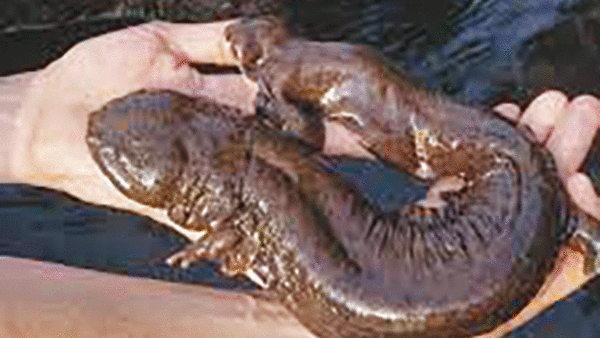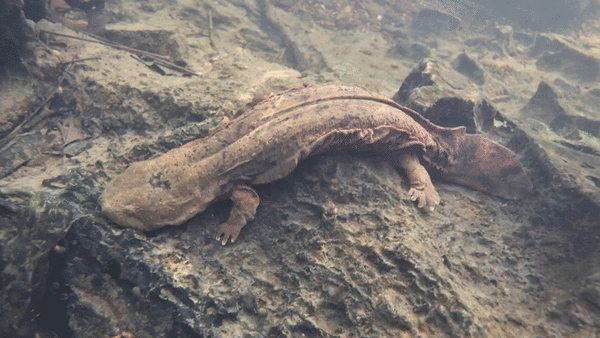

The hellbender salamander has been called a lot of names: snot otter; mud devil; old lasagna sides. And now, perhaps: baby-eating cannibal, according to new research into the parental habits of these giant amphibians.
An eight-year study of hellbenders living in the rivers of southwestern Virginia has found that male salamanders are increasingly consuming their own young in areas near decimated forests.
Without nearby trees, pollutants flow into rivers, changing water chemistry in ways that seem to be altering paternal behaviour, the researchers said. Infanticide is becoming so widespread that eastern hellbenders — the largest salamander in North America at 2-feet long and weighing up to 5 pounds — may be on the cusp of eating future generations into extinction.
“If you have rates of cannibalism this high, then that alone is enough to explain many of the population declines we’ve seen across the species range,” said Bill Hopkins, an ecologist at Virginia Tech who led the research. The findings will appear in The American Naturalist.

Eastern hellbenders once thrived across 15 states. Their numbers have dwindled over the past 50 years, however, and researchers have struggled to explain why. Habitat loss, disease, poaching and climate change all probably contribute. But the driving factor might be baby-eating in response to deforestation.
Eating eggs with low chances of survival helps the salamanders conserve energy in lean times and boosts their chances of surviving long enough to make more and stronger babies in the future.
Hopkins’ research suggests that cannibalism may be on the rise, with environmental damage — spurred by human activities such as cutting down forests — most likely to blame. He and his colleagues set up hundreds of underwater nest boxes in three rivers across southwestern Virginia. From 2013 to 2020, they monitored each box, tracking the fate of egg clusters they found.
In areas with lush forest cover, males ate their entire spawn about 14 per cent of the time. But this happened more than three times as often wherever trees had been cut down. — NYT
Oman Observer is now on the WhatsApp channel. Click here


